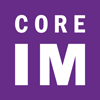Core IM
Physicians often choose to stop a patient’s home diabetes medications during a hospital admission in favor of sliding scale insulin despite little evidence to support the use of sliding scale insulin in the hospital. Despite the perceived risks of continuing many oral diabetes medications in the hospital there is evidence that some medications can be safe and effective for treating hyperglycemia in the hospital, especially DPP4 inhibitors. In this episode of Core IM, the team will discuss this challenge and explore incretin-based therapies, sulfonylurea and thiazolidinediones, and much more to gain a better understanding of Oral Diabetes Medications Inpatient.
First, listen to the podcast. After listening, ACP members can take the CME/MOC quiz for free.
CME/MOC:
Up to 1
AMA PRA Category 1 Credits ™ and MOC Points
Expires October 13, 2024
active
Cost:
Free to Members
Format:
Podcasts and Audio Content
Product:
Core IM
Welcome to Core IM, a virtual medical community! Core IM strives to empower its colleagues of all levels and backgrounds with clinically applicable information as well as inspire curiosity and critical thinking. Core IM promotes its mission through podcasts and other multimodal dialogues. ACP has teamed up with Core IM to offer continuing medical education, available exclusively to ACP members by completing the CME/MOC quiz.

Note: This applies specifically to Type 2 Diabetes Mellitus.
Where does the dogma of stopping metformin come from?
- Metformin (of the biguanide class) is often held on admission due to concern for development of lactic acidosis
- Biguanides increase insulin sensitivity, but also inhibit pyruvate dehydrogenase, potentially leading to lactic acidosis
- Phenformin, an older biguanide, was found to cause lactic acidosis because
- Phenformin has a large lipophilic side chain, leading to increased binding to mitochondrial membrane and therefore more anaerobic metabolism
- Phenformin has a long half-life (11 hours) compared to metformin (4-8 hours)
- Up to 10% of patients have defects in phenformin metabolism, leading to prolonged circulate in the bloodstream
- Phenformin was pulled off the market in the 1970s due to high rates of lactic acidosis
- Phenformin made everyone skeptical of the safety of all biguanides and case reports of metformin leading to lactic acidosis appeared. Almost all of these case reports were in patients either who
- Took high doses of metformin (>20 grams), with renal dysfunction, or
- Had a lactate-predisposing conditions (e.g., sepsis, decompensated heart failure, etc.)
- The lactic acid generated by metformin is typically handled by the kidneys and liver quite easily
Can metformin be used in patients receiving contrast?
- The 2021 American College of Radiology (ACR) Manual on Contrast Media has a statement about metformin and iodinated contrast use
- Patients taking metformin are NOT at higher risk than other patients for post-contrast acute kidney injury.
- Iodinated contrast is a potential concern for furthering renal damage in patients with
- Acute kidney injury
- Severe chronic kidney disease (stage IV or stage V).
- There have been NO reports of lactic acidosis following intravenous iodinated contrast medium administration in patients properly selected for metformin administration.
Can we continue incretin-based therapies (GLP-1s and DPP-4) in hospitalized patients?
Incretin-based therapies:
- Mechanism: stimulates insulin secretion in response to elevated blood glucose levels
- GLP-1 (glucagon-like peptide) receptor agonists
- Examples: meds that end in “-tide” (e.g, liraglutide, exenatide)
- Avoid in patients with:
- Pancreatic disease
- Nausea and vomiting on admission because GLP-1s can slow down gastric emptying, leading to nausea and vomiting
- 10% of patients on GLP-1s become nauseous
- Concern for gastric dysmotility
- DPP-4 (dipeptidyl peptidase 4) inhibitors
- Examples: things that end in “-gliptins” (e.g., sitagliptin, alogliptin)
- Avoid in patients with:
- Pancreatic disease
- Heart failure (only saxagliptin)
What about the other oral diabetes medications? What should we consider when resuming or stopping outpatient diabetes upon admission?
Note: Meglitinides and alpha glucosidase inhibitors will not be discussed
- SGLT-2 (sodium-glucose transport protein 2) inhibitors
- Examples: meds that end in “-flozin” (e.g., empagliflozin, canagliflozin)
- Mechanism: Inhibits SGLT-2 receptor in nephrons, reducing reabsorption of glucose, thereby decreasing serum glucose levels
- Avoid in patients with:
- Hypovolemia
- Poor (or variable) oral intake (such as being made NPO)
- Sulfonylureas
- Examples: glipizide, glyburide
- Mechanism: increase insulin release from pancreas (independent of oral intake!)
- Avoid in patients with:
- Poor (or variable) oral intake (such as being made NPO)
- Thiazolidinediones (PPAR-gamma agonists)
- Examples: meds that end in “-zone” (e.g., rosiglitazone, pioglitazone)
- Mechanism: reduce insulin resistance
- Avoid continuing in all patients due to their increased risk of heart failure and rosiglitazone’s risk of MI
How do we appropriately use insulin in hospitalized patients with type 2 diabetes?
- Patients on sliding scale insulin monotherapy can have a higher average blood glucose than patients on basal-bolus insulin (per RABBIT-2 trial)
- Hyperglycemia can lead to more infections due to neutrophil impairment
- Target blood sugar in hospitalized patients is 140-180 mg/dL (per NICE-SUGAR trial conducted in critically ill patients)
- Factors to consider when starting weight-based insulin regimens
- GFR <60
- Older age
- Total dose of weight-based insulin regimen can be 0.3 units/kg
- ~50% as basal insulin
- ~50% as bolus insulin
- Sliding scale insulin
- If blood glucose is low- to mid-200s, can use basal insulin + DPP-4 inhibitor + sliding scale insulin
Contributors
Tyler Larsen, MD, ACP Member - Guest
Satya Patel, MD, ACP Member - Guest
Shreya Trivedi, MD, ACP Member - Moderator
Guillermo Umpierrez, MD, MACP* - Guest
Reviewers
Jane Eileen Weinreb, MD
Amanda Klinger, MD
Those named above unless otherwise indicated have no relationships with any entity producing, marketing, reselling, or distributing health care goods consumed by, or used on, patients.
*Dr. Umpierrez reports relationships with Astra Zeneca and Dexcom related to institutional grants. These relationships have been mitigated.
Release Date: October 13, 2021
Expiration Date: October 13, 2023
CME Credit
This activity has been planned and implemented in accordance with the accreditation requirements and policies of the Accreditation Council for Continuing Medical Education (ACCME) through the joint providership of the American College of Physicians and the Core IM. The American College of Physicians is accredited by the ACCME to provide continuing medical education for physicians.
The American College of Physicians designates each enduring material (podcast) for 0.75 AMA PRA Category 1 Credit™. Physicians should claim only the credit commensurate with the extent of their participation in the activity.
ABIM Maintenance of Certification (MOC) Points
Successful completion of this CME activity, which includes participation in the evaluation component, enables the participant to earn up to 0.75 medical knowledge MOC Point in the American Board of Internal Medicine’s (ABIM) Maintenance of Certification (MOC) program. Participants will earn MOC points equivalent to the amount of CME credits claimed for the activity. It is the CME activity provider’s responsibility to submit participant completion information to ACCME for the purpose of granting ABIM MOC credit.
How to Claim CME Credit and MOC Points
After listening to the podcast, complete a brief multiple-choice question quiz. To claim CME credit and MOC points you must achieve a minimum passing score of 66%. You may take the quiz multiple times to achieve a passing score.


